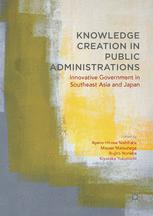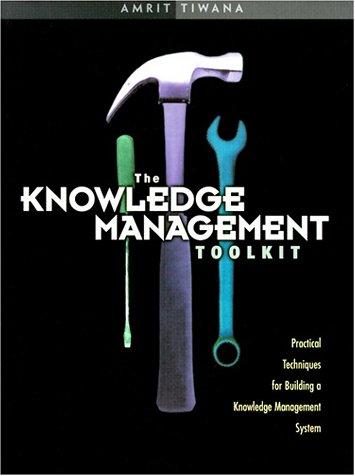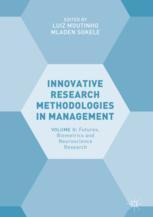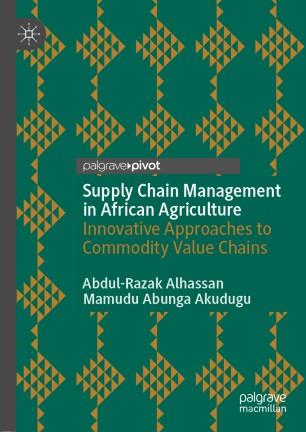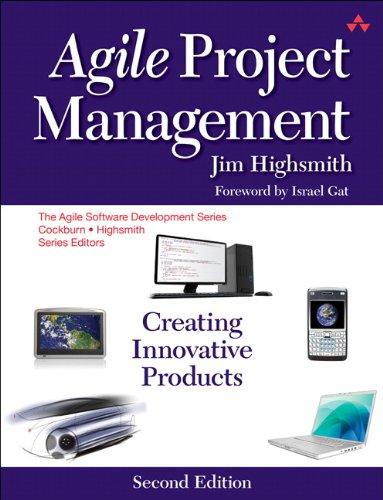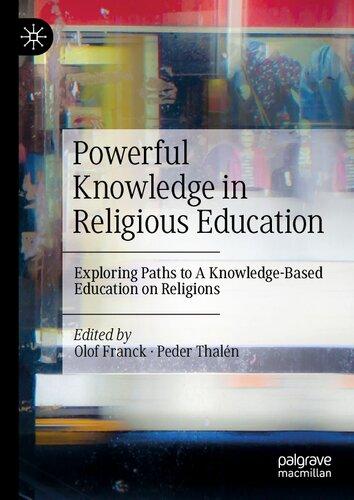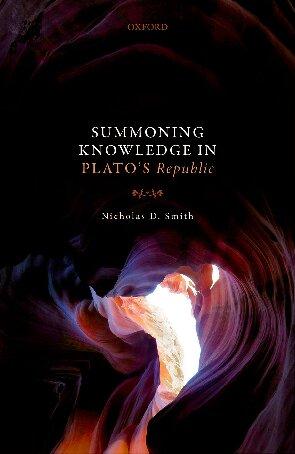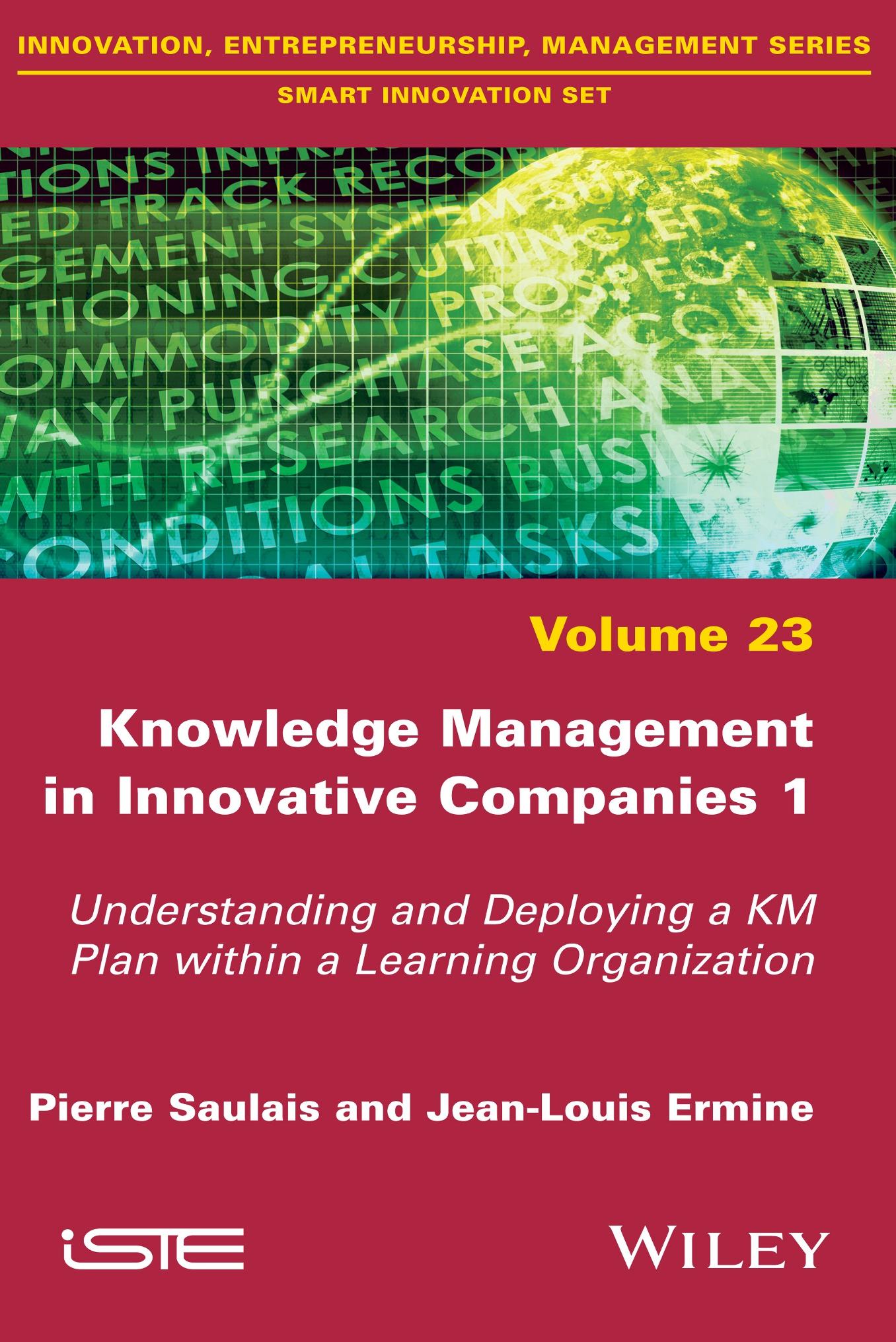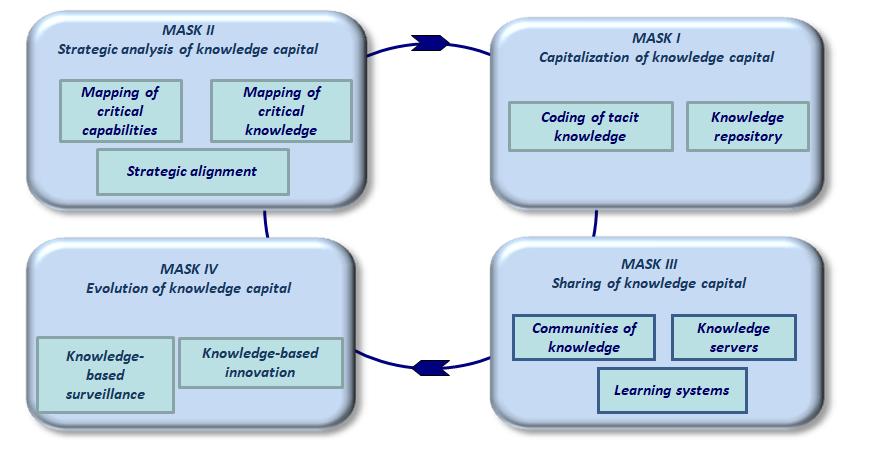Knowledge Management in Innovative Companies 1 Ermine
Visit to download the full and correct content document: https://ebookmass.com/product/knowledge-management-in-innovative-companies-1ermine/
More products digital (pdf, epub, mobi) instant download maybe you interests ...
Knowledge Creation in Public Administrations: Innovative Government in Southeast Asia and Japan 1st Edition Ayano Hirose Nishihara
https://ebookmass.com/product/knowledge-creation-in-publicadministrations-innovative-government-in-southeast-asia-andjapan-1st-edition-ayano-hirose-nishihara/
Knowledge Management Toolkit, The: Practical Techniques for Building a Knowledge Management System Amrit Tiwana
https://ebookmass.com/product/knowledge-management-toolkit-thepractical-techniques-for-building-a-knowledge-management-systemamrit-tiwana/
Innovative Research Methodologies in Management: Volume II: Futures, Biometrics and Neuroscience Research 1st Edition Luiz Moutinho
https://ebookmass.com/product/innovative-research-methodologiesin-management-volume-ii-futures-biometrics-and-neuroscienceresearch-1st-edition-luiz-moutinho/
Supply Chain Management in African Agriculture: Innovative Approaches to Commodity Value Chains 1st ed. Edition Abdul-Razak Alhassan
https://ebookmass.com/product/supply-chain-management-in-africanagriculture-innovative-approaches-to-commodity-value-chains-1sted-edition-abdul-razak-alhassan/
Agile Project Management: Creating Innovative Products (Agile Software Development Series) 2nd Edition, (Ebook PDF)
https://ebookmass.com/product/agile-project-management-creatinginnovative-products-agile-software-development-series-2ndedition-ebook-pdf/
Innovative Practices in Early English Language Education David Valente
https://ebookmass.com/product/innovative-practices-in-earlyenglish-language-education-david-valente/
An Innovative Role of Biofiltration in Wastewater Treatment Plants (WWTPs) Maulin
P. Shah
https://ebookmass.com/product/an-innovative-role-ofbiofiltration-in-wastewater-treatment-plants-wwtps-maulin-p-shah/
Powerful Knowledge in Religious Education: Exploring Paths to A Knowledge-Based Education on Religions Olof Franck
https://ebookmass.com/product/powerful-knowledge-in-religiouseducation-exploring-paths-to-a-knowledge-based-education-onreligions-olof-franck/
Summoning Knowledge in Plato's Republic Nicholas D. Smith
https://ebookmass.com/product/summoning-knowledge-in-platosrepublic-nicholas-d-smith/
Dimitri Uzunidis
Pierre Saulais
Jean-Louis Ermine
First published 2019 in Great Britain and the United States by ISTE Ltd and John Wiley & Sons, Inc.
Apart from any fair dealing for the purposes of research or private study, or criticism or review, as permitted under the Copyright, Designs and Patents Act 1988, this publication may only be reproduced, stored or transmitted, in any form or by any means, with the prior permission in writing of the publishers, or in the case of reprographic reproduction in accordance with the terms and licenses issued by the CLA. Enquiries concerning reproduction outside these terms should be sent to the publishers at the undermentioned address:
ISTE Ltd
John Wiley & Sons, Inc.
27-37 St George’s Road 111 River Street London SW19 4EU Hoboken, NJ 07030 UK USA
www.iste.co.uk
www.wiley.com
© ISTE Ltd 2019
The rights of Pierre Saulais and Jean-Louis Ermine to be identified as the authors of this work have been asserted by them in accordance with the Copyright, Designs and Patents Act 1988.
Library of Congress Control Number: 2019944511
British Library Cataloguing-in-Publication Data
A CIP record for this book is available from the British Library
ISBN 978-1-78630-320-2
2.1.
2.2.
2.2.1.
2.2.2.
2.2.3.
2.2.4.
2.2.5.
2.3.
2.3.4.
2.3.5.
2.3.6.
2.3.7.
2.3.8.
2.4.
2.4.3.
2.5.
2.5.1.
2.5.2.
2.6.
2.6.1.
2.6.2.
2.6.3.
2.6.4.
2.7.
3.1.
3.3. The case of INRS: a consulting approach to improve safety when using
3.3.1.
3.3.2.
of a reported
or accident on a woodworking
3.3.3.
3.3.4.
3.3.5. History of INRS’ involvement
3.3.6.
3.4. The case of code systems: knowledge books for code
3.4.2.
for the development and use of
3.4.3.
3.4.4.
3.4.5.
3.4.6.
3.5.
3.5.4.
3.5.5.
3.5.6.
3.5.7.
3.6.
Preface
Knowledge management (KM) is a field that is now reaching maturity.
In the academic world, KM has established itself as an autonomous field, with a constant and impressive growth in the number of academic publications devoted to it, with dozens of international scientific journals dealing with the subject, with a large number of congresses throughout the world and with the creation of dedicated learned societies. In France and in the French-speaking world, it is AGeCSO (Association pour la Gestion des Connaissances dans la Société et les Organisations) that brings together research laboratories interested in this field. I helped to create this association and had the honor of being its first president. This active association is now recognized and it organizes an annual congress (in France or Quebec), the 12th of which will be held in France (Clermont-Ferrand) in 2019.
In the economic world, KM has gradually taken its place in companies and organizations. In some organizations, new knowledge management processes have been put in place, specific structures have been created around this theme, specific expectations have been integrated into strategic objectives, etc. Gradually, the economic world is adapting to this famous “knowledge economy“, which represents the economy of the future. After hesitant and often chaotic beginnings, KM is also maturing in companies. A strong structuring element is the arrival of international standards, which now guide the KM approach of companies around the world. These include section 7.1.6 of ISO 9001:2015, the IAEA’s nuclear safety standards and, above all, ISO 30401, which defines the requirements for a knowledge
management system. The ISO 30401 standard was published in November 2018 for the English version and in January 2019 for the French version.
The road towards KM maturity has been long and sometimes difficult. I started it more than 20 years ago, first at the University of Bordeaux, until 1991, when I started with artificial intelligence, then at the CEA (Commissariat à l’Énergie Atomique et aux Energies Alternatives), where I was in charge of a knowledge management unit from 1994 (we were not yet talking about knowledge management at the time!), until 2000. It is in particular by working on large and fascinating projects in this organization that the first versions of the MASK method discussed in this book were developed. From 2003, I was able to continue my work on KM at the Institut Mines-Télécom and collaborate on the NKM (Nuclear Knowledge Management) project of the International Atomic Energy Agency.
In 1999, I participated in the creation of a professional association, the Club Gestion des Connaissances, a French knowledge management club which I chaired for 17 years. This association, whose founding members are PSA Peugeot Citroën, Microsoft France, Cofinoga and Bull/Osis, brings together some 50 very diverse companies in 2019. Its objectives are to promote inter-sectoral exchanges, develop a network of contacts and build a shared operational reference system. After 20 years of existence and work, the Club has developed a KM methodological reference framework widely used by its members and which has served as a working document in the IAEA and ISO 30401 standardization commissions. It can therefore be said that the Knowledge Management Club has contributed, at both the national and international levels, to the maturity of the field in general.
At the dawn of the 2020s, which are beginning to change the (almost paradigmatic) framework of knowledge management, it seemed useful to me to draw the lessons learned from this journey, so as not to reinvent elements that have already been the subject of much reflection and experimentation. It is a bit like applying the principles of knowledge management to yourself!
A first step was to establish, in the light of these lessons, a theoretical and a practical framework for the field. This is the subject of the first book “Knowledge Management: The Creative Loop” published in 2018 by Wiley/ISTE [ERM 18a]. This book does indeed have two distinct parts: one on the theory of KM and one on the practice of KM.
To go further and satisfy even more KM practitioners in organizations, it seemed useful to Pierre Saulais and myself to illustrate this first book with real cases, which I experienced with other actors in research, industry and/or the Club Gestion des Connaissances. This was not an easy task. It was necessary to search for documents sometimes well buried in the corners of hard disks, in storage places more or less improbable or to call upon more or less recent memories (including mine)! It was necessary to compile, reread, rewrite and structure the content according to the plan in Part 2 of the book [ERM 18a], in order to ensure its true illustration. Two tools have helped us considerably in this task. The first tool is the basis of the CNRS’s open HAL archives, where I have deposited the original writings concerning the corresponding cases included in this book. Thus, the reader will be able to freely consult the additions desired by referring to the HAL identifiers provided in the bibliography. The second tool is, of course, the Club Gestion des Connaissances’ KM methodological reference framework, which includes many case studies and from which we have extracted some of the most significant studies.
To make the link with [ERM 18a], we have written an introductory chapter using the KM framework and, at the beginning of each chapter dedicated to a case study theme, we have taken it upon ourselves to provide a brief introduction to the subject dealt with in that theme.
We still have to thank the many people who are mentioned in the references, with whom I collaborated and/or who created these applications, leaving behind testimonies that will undoubtedly inspire the next generation of KM.
We hope that this set of cases will be enlightening for KM practitioners, who will be able to discover the innovative possibilities offered by structured and equipped approaches, outside the box.
Périgueux, August 2019
Jean-Louis ERMINE
Honorary President of the Club Gestion des Connaissances and Honorary President of the Association pour la Gestion des Connaissances dans la Société et les Organisations
The KM Project in an Organization
1.1. Articulation of Chapter 1
The purpose of this chapter is to introduce the concepts of knowledge management (KM) in organizations, the concepts of operational methodology, as well as the need for a global and shared vision of a company’s KM project.
In section 1.2, we recall the foundations of KM in organizations.
Section 1.3 is dedicated to the reference framework for a knowledgebased KM, which is based on the daisy model.
In section 1.4, we show how to obtain an operational instantiation of the daisy model in the form of the virtuous cycle of knowledge.
The four steps of the MASK method (Method for Analyzing and Structuring Knowledge), which will instrument the virtuous cycle of knowledge, are described in section 1.5. This operational approach will structure the rest of the book: the four steps (MASK I to MASK IV) of the method are respectively at the heart of Chapters 2–5, while the design and deployment of a global KM project based on these four steps constitute the heart of Chapter 6.
Section 1.6 illustrates how a KM project can be fed by a process repository dedicated to the organization’s knowledge capital.
The study of the critical success factors relating to the design and operational deployment of a global KM project is discussed in section 1.7.
Finally, section 1.8 summarizes Chapter 1.
1.2. Knowledge management
Every company has always managed its knowledge and expertise by explaining it in documents and procedures, by disseminating it, for example through training, by organizing all kinds of exchanges with their employees, etc. In the case of know-how (the ability of an agent to carry out an activity based on the application of methodological knowledge), for example, the interest of KM is threefold: formalize, memorize and reuse. Formalization makes it possible to reach a stage of maturity in the field of the know-how concerned, by compelling the agent to structure thinking or to observe the physical elements manipulated and to describe them through models. The memorization function allows the formalized know-how to be preserved from a temporary or permanent unavailability of its owner. The reuse of expertise is the economic argument for the knowledge management approach, because, once formalized and memorized, this know-how can be implemented by other qualified agents, but in the absence of the person who possessed it.
C. Sargis-Roussel confirms that, although knowledge management is at the heart of a recent craze, it is nothing new in companies [SAR 02]. “Industrial families” passed on their knowledge from generation to generation: master painters trained apprentices and workers exchanged their expertise [HAN 99]. In the more recent past, specialists in armaments, nuclear or civil aviation have been implementing KM practices for several decades. However, it was only in the early 1990s that the term “knowledge management” truly emerged in the literature and that business leaders and researchers began to question the place of knowledge in the organization and how to manage it. Alongside the emergence of these questions, we can observe the development of information systems (which make it easier to codify, store and transmit certain information and knowledge), as well as the increase in questions on the possibilities and conditions of KM [FER 06].
For J.-Y. Prax, KM should meet four specific expectations of organizational agents seen as information users, the answers to these four expectations being constitutive of efficiency:
– providing at the right time the information that agents need, without their having to request it;
– satisfying requests, because knowledge management adopts a useroriented logic, while the information system approach focuses on the accumulation of information;
– building a process for the creation, enrichment, capitalization and validation of knowledge and know-how involving all agents;
– contributing to collective performance and its sustainability [PRA 00].
However, KM also consists of providing employees with the necessary support for knowledge exchange, an exchange that allows them to go beyond their intrinsic cognitive limits, to value and develop individual and organizational knowledge. Knowledge management is therefore constructed at the crossroads of decision support systems, human resources management and the formal information system. It therefore comes to ask questions about organization. Moreover, particularly in recent decades, knowledge has suddenly taken on a crucial and decisive importance (particularly in its market dimension) in our society, which has been described as post-industrial and largely intangible, as a new driving force of growth, combined with the unavoidable imperative of innovation [BOU 12]. As a result, in recent years, with both sudden and unexpected force, knowledge management has emerged as a major challenge in companies. A new dimension has emerged, the strategic dimension of knowledge, as a resource for competitiveness, performance and risk prevention. A set of strategic elements contributes to this emergence: knowledge is an economic capital [FOR 09]; knowledge is a strategic resource, whose control is an attribute of the company [TAR 98]; knowledge is a factor of company stability, because it is slowly changing [TAR 98]; knowledge brings a decisive competitive advantage, etc.
According to [FOR 09], since the late 1990s, we have been moving into a knowledge-based economy. In this context, the production of knowledge becomes, first of all, a challenge to construct a new industrial policy capable of combating the deindustrialization of many Western countries. Thus, at the Lisbon European Council meeting in March 2000, European leaders decided
“to make the European Union the most competitive and dynamic knowledge-based economy in the world, capable of sustainable economic growth with more and better jobs and greater social cohesion”.
At the same time, companies are gradually becoming aware of this economic evolution: knowledge is becoming a crucial resource. They understand this all the more acutely as the entry into the knowledge economy coincides with the emergence of organizational dysfunctions linked to the loss of knowledge held by retiring baby boomers. Some industries, such as aeronautics, are finding it difficult to maintain their aircraft. Others, such as the steel industry, see technical know-how disappearing completely in a few years, creating risks for the safety of installations. The management of this resource then becomes an imperative to ensure the company’s competitiveness, as well as the quality of service and the safety of the installations. These situations make it clear that KM and production are no longer solely the responsibility of research or innovation centers. The company’s knowledge in all its fields of competence (research and development or R&D, production, marketing, accounting, finance, etc.) becomes a resource to be managed in the same way as an industrial park or the skills of employees. To face this challenge, companies are often required to implement specific management approaches (KM approaches).
However, knowledge is not a resource like any other. By becoming a key resource for companies, it will obviously lead them to change their organizational methods. In-company knowledge is often inseparable from the individual. It develops according to a particular process (Nonaka and Takeuchi’s spiral of knowledge, associating the individual with the organization [NO 95]). It is very largely tacit [POL 67], integrated into work situations and practices [WEI 95], [WEN 98]. It is this property that creates the value of a company’s knowledge and also makes it neither controllable nor manageable according to traditional business resource management methods. While companies have greatly evolved the classic organizational model (Taylorian and Weberian models) to adapt it to changes in the economic and competitive environment, they remain organizations built around the “myth” of rationality and control. The organization of collective action, i.e. the planning of each actor’s tasks and the use of resources, is based on a rational and optimal decision that makes it possible to achieve the collective objective. The corollary is that any organizational resource, whatever it may be, must be controlled by the organization. Knowledge,
which has now become crucial for organizations, but cannot be controlled, obviously disrupts this organizational logic. Beyond that, in this traditional organization, hierarchical legitimacy is based on this capacity to control resources and on the rationality of the resulting division of tasks. As the “knowledge” resource is not controllable, by becoming a crucial resource for the organization, it also calls into question the legitimacy of the hierarchical logic and specialization of tasks. As Hatchuel, Le Masson and Weil point out, considering knowledge as a key corporate resource thus leads to a real crisis of collective action, which heralds the necessary reassessment and transformation of relationships in companies and should lead to an organizational transformation like the one they experienced at the beginning of the 20th Century [HAT 02a].
Just as there is a knowledge economy, there is a new perspective to be adopted on management with the emergence of knowledge as a key resource for companies. As Dorothy Leidner writes, the issue of KM as a key resource for organizations introduces “a new theoretical perspective for understanding and interpreting organizational phenomena. It is like glasses that we put on to better understand the nature of the managerial problems we face and until such an important new perspective emerges, KM will continue to play this essential role in management research and in understanding organizational phenomena” [LEI 08] (author’s translation).
To best manage the company’s knowledge capital, which is now considered as a strategic resource, company managers will have to define global objectives based on three key points:
– capitalizing: “knowing where you come from, knowing where you are, to better know where you’re going”;
– sharing: “moving from individual to collective intelligence”;
– creating: “creating and innovating to survive”.
KM, now in the reality of the company, is therefore a new and complex approach. But understanding what KM really is in an organization is not an easy task, as it cuts across almost every component of it. Indeed, it concerns:
– strategy, because it is really a new type of management that responds to a new socio-economic environment and a new vision of the organization;
– the structure of the organization, because knowledge is made and broken down through complex networks, connected to the environment, which can challenge traditional structures;
– many processes already in place in organizations (fortunately, human beings have always managed their knowledge!), but which need to be reviewed in new perspectives of optimization or development; – the organization’s staff, who are at the heart of the problem, so much so that knowledge is only created, shared and developed through people, who must mobilize themselves personally and collectively for this objective; – information and communication technologies, which are powerful vectors for knowledge management, provided they are used effectively.
While, as we have already pointed out, KM in companies is not new, what has changed is this new strategic dimension of knowledge as a resource for competitiveness and performance. This requires the company to adopt a global, conscious and reasoned approach to its knowledge capital. Such a global approach, capable of managing the company’s knowledge capital, is therefore a long-term task. This work must be carried out gradually, building on all the KM actions that have already been carried out in the organization (most often “like Mr. Jourdain”), broadening their scope of action and focusing on strategic issues. It is also a cultural work, which must gradually become part of working habits and not as a revolution that must turn everything upside down. In a word, it is a long-term project, built around a continuous improvement approach, based on what already exists. After 20 years of maturation, KM has now entered an operational phase. The objective for companies now is to plan, establish and maintain an effective KM program.
1.3.
A reference framework for a knowledge-based KM
1.3.1. Knowledge-based KM
The nature and driving forces of companies have evolved considerably since the beginning of the industrial era. In the past, the company focused on two essential elements: the productive tool and work in the Taylorian sense [ERM 03]. In 1911, Taylor thought he had demonstrated that business management can be made a science by codifying all the actions of the company and removing all uncertainty through the division between those
who specify tasks and those who perform them [TAY 11]. The main functions of the company, at the top of the hierarchical pyramid, were production, R&D, sales, accounting, etc.
Apart from these two initial points of view (production tool and Taylorian division of labor), important levers have emerged as the world’s macro and microeconomic evolution has progressed. These are, for example, customer relations, the information system, economic intelligence, quality, etc. New professions crucial to the company have emerged (purchasing, marketing, communication, strategy, etc.). The company has continuously reorganized itself in relation to its environment to meet new economic challenges (and continues to do so), particularly through the development of processes, according to the concept of business process management [TAR 95]. For many years, the company has enhanced its process repository to take into account all these changes.
As a company project, KM must link the classic visions of the basic professions with these new challenges and these new requirements. The aim of the KM project is to bring together, in coherent processes of its own, the critical knowledge, essential resources for the production of goods and services and that which comes from the increasingly important economic and competitive environment. According to the basic assumption formulated in [ERM 18a], coherence is organized around the company’s knowledge capital, to which all key KM processes must contribute and through which they cooperate. This is called knowledge-based KM.
These key processes are organized according to a model, known as the daisy model, described in the following section.
1.3.1.1.
The daisy model
This section is based on [ERM 03].
The processes that strategically contribute to the management of the company’s knowledge capital are internal, such as capitalization and sharing or creativity and learning, as well as external, such as economic intelligence or surveillance, which must be nourished by internal knowledge to better return to it or like customer relations and marketing, which act as a filter on the immense potential for creating and developing companies’ knowledge.
KM is the management of these processes and the consideration of their relationship to the company’s knowledge capital. They can be described in four main classes, which correspond to the “petals” of the daisy, plus a class that corresponds to the heart of this model:
– the capitalization and sharing of knowledge class. It carries out the virtuous cycle of knowledge and ensures the sharing (recycling) of the knowledge resource within the company;
– the interaction with the environment class. A system isolated from its environment is a dead system. This is particularly true for knowledge that feeds on the ever-increasing flows of information from the company’s environment. The class contains complex processes that transform these information flows into a capital of useful knowledge for the company. These include, among others, the processes of surveillance or economic or strategic intelligence (business intelligence). The interaction with the environment class currently focuses mainly on the external information aspect, but little on the interaction with the company’s own knowledge;
– the learning and knowledge creation class. This class contains endogenous and collective processes that form the basis for the evolution of knowledge. It includes the issues of the learning organization and creativity;
– the selection by the environment class. Evolutionary par excellence, this class ensures the selection of the knowledge created, by introducing market criteria, acceptability criteria, etc., criteria that are both economic and socio-technical. This class addresses marketing, customer relations, etc. The problem of KM is integrating this type of problem into a strong relationship with the company’s critical knowledge, particularly business knowledge, for example;
– to these four classes, a fifth can be added, which is entirely internal to the knowledge capital, since it concerns the evaluation of it (qualitative evaluation, quantitative evaluation, financial or managerial evaluation for strategic management, etc.). More than a tool, evaluation is seen here as a real process, which requires sophisticated implementation and monitoring and which generates transformation within the organization.

It should be noted that none of these process classes are absent in organizations, in one form or another, in an intuitive or formalized way, in simple or sophisticated forms. Fortunately, knowledge management has always been present in companies. What is new is its generalized and strategic aspect, due to new challenges and the willingness to cooperate in a common objective of activities hitherto perceived as disparate and often located on the periphery of the company’s experience. In a very caricatured way, we could entrust the capitalization process to documentation service, or even an archive service, the sharing process to an IT service, the interaction process to a surveillance service, the learning process to a training service, the creation process to an innovation service and the selection process to a marketing service. These services may well never talk to each other and work without close or daily contact with the company’s business lines. Unfortunately, it seems that this situation is not just a caricature!
The objective of a KM project is to define a set of consistent methods and tools to manage all these process classes and, thus, fully achieve the objective of KM. The four petals of the daisy, mentioned here, are only a starting point. If they are detailed, they can be separated into many other petals. Implementing a knowledge management policy will then consist of “picking the daisy petals”.
Figure 1.1. The daisy model: key processes of knowledge management
1.4. The virtuous cycle of knowledge
We now wish to complete the daisy model approach with a more operational approach allowing us to set up a real KM project in the company.
The knowledge-based approach illustrated in this book is implemented in a four-step cycle, called the virtuous knowledge cycle, as shown in Figure 1.2.
1.4.1. Step 1: analysis of a knowledge capital and development of a KM plan
Since a company’s knowledge resources are its key advantages, building on these knowledge capitals and maximizing its potential are essential conditions for developing and achieving sustainability. However, these resources are vulnerable and may be threatened, for example, by the loss of knowledge (mainly a significant loss of tacit knowledge). Therefore, it is essential to plan for the preservation, transfer, evolution and creation of knowledge throughout the company’s activities and its interactions with its
Figure 1.2. The virtuous knowledge cycle
environment. The KM plan must be designed and integrated as a strategic business process.
The construction of a KM plan requires answers to the following questions:
– What are the essential knowledge areas for the company?
– Are they strategic?
– What are the main threats and risks to these areas?
– Who owns this knowledge?
– What are the possible and relevant operational actions to manage this knowledge?
– How can we ensure that the action plan is aligned with the company’s strategic objectives?
To answer these questions, it is necessary to carry out an analysis of the company’s knowledge capital, guided by the strategy defining the company’s missions. The proposal for a KM action plan for preservation then comes with the objective of sharing and developing knowledge in accordance with this strategy.
1.4.2. Step 2: organization of knowledge resources
For the strategic knowledge areas identified in the first step, a wide range of knowledge resources can be identified, hence the need to put them in order and determine how they should be organized and structured.
Usually, this huge body of knowledge is scattered in various places, tacit knowledge is not sufficiently made explicit, links between blocks of knowledge are often missing, etc. There is no complete view of the body of knowledge (tacit or explicit) associated with each knowledge domain and it is far from being easily accessible. It is difficult to map resources, to design a coherent repository to facilitate their organization, to allow their maintenance and to ensure their availability. This often involves adding new knowledge resources and tools to this repository.
1.4.3. Step 3: implementation of KM processes
The next step is to organize the use of knowledge resources in the daily work of actors: how to share, transfer, acquire, etc. their knowledge in order to be effective in their operational or decision-making tasks? As business processes are implemented to support business activities, KM processes must be implemented to support the use of knowledge in these business processes, as required by the KM plan.
1.4.4. Step 4: evolution of a knowledge capital
The ultimate objective of KM is to transform the company into a creative organization. Thus, the ultimate goal of KM processes is to foster innovation. KM develops the company’s ability to strategically develop all its knowledge resources by creating new and relevant knowledge. To do this, KM must use all the resources created in the previous steps to promote the evolution of the company’s knowledge. In addition, it is necessary to ensure that KM continues to focus its efforts on the right resources and thus remains relevant. A good way to do this is to put in place a mechanism (survey, supervision, evaluations, etc.) to measure how knowledge is used and how it benefits the organization.
1.5. The MASK method
The MASK method (Method for Analyzing and Structuring Knowledge) is a knowledge management method developed by Jean-Louis Ermine, first at the Commissariat à l’Énergie Atomique et aux Énergies Alternatives (CEA), to solve knowledge capitalization problems (this part is now called MASK I). The method was then extended to the general problem of KM. It is based on a formal theory of knowledge, a structured methodology and a set of tools [ERM 18a].
This method respects the principles set out above and is therefore an example of illustrating the virtuous knowledge cycle, on a (non-exhaustive) set of crucial topics in a KM approach. It is this set that will provide a large number of the case studies presented in this book.
The MASK method is organized into four modules, covering the four steps of the KM cycle.
Note: the numbering of the MASK I to MASK IV modules corresponds to the chronology of their development. Thus, the first module developed, MASK I, for knowledge capitalization deals with step 2, while the second module developed, MASK II, for strategic knowledge analysis deals with step 1.
Figure 1.3. The complete MASK operational approach. For a color version of this figure, see www.iste.co.uk/saulais/knowledge.zip
We briefly recall here the MASK approach [ERM 13].
1.5.1. MASK II: analysis of a knowledge capital
The knowledge capital analysis process is an audit of the company’s knowledge in order to create a KM action plan to manage this corpus asset.
1.5.1.1. Step 1: analysis of critical capacities
In a nutshell, this capacity will be defined as a collective one that integrates a set of individual skills to achieve the organization’s strategic objectives. Critical capacity analysis consists of identifying and qualifying the capacities required by the company to successfully carry out its missions and achieve its operational objectives.
To do this, it is first necessary to identify the objectives that the company (or unit of the company) concerned is trying to achieve. An objective map is built, which is a clear and simple representation of the operational strategy of the company or unit in question. It formulates the missions in the form of objectives to be achieved for the organization.
The next phase consists of identifying and qualifying the capacities required by the company to achieve the objectives mentioned in the strategy map. Each of the identified capacities is qualitatively assessed by its criticality level. A capacity can be assessed as very critical, moderately critical or non-critical, knowing that it is more or less critical depending on whether it is more or less rare, useful for the company, difficult to acquire or difficult to implement.
1.5.1.2.
Step 2: analysis of critical knowledge
The analysis of critical knowledge consists of identifying and qualifying the different areas of knowledge present in the company. In a simplified way, we will define a knowledge domain as a body of business knowledge perceived as homogeneous. This knowledge is carried by people realizing one or more activities characteristic of the company and constituting the company’s “knowledge network”. They are materialized by a set of documents or they gather a set of tacit knowledge and know-how.
The first phase of knowledge criticality analysis is the construction of the knowledge domain map (or knowledge map). Then, for each knowledge domain, the criticality analysis must be performed. The criticality assessment of a domain consists of assigning a criticality score by evaluating several criteria: the more critical the domain, the higher the score. Each domain is evaluated independently of the others.
1.5.1.3.
Step 3: strategic alignment
The objective of this step is to compare the strategic visions developed in the first step (capacities required to achieve the objectives and their criticality) and the field business visions developed in the second step (knowledge necessary for the businesses in their activities with their criticality).
This step also makes it possible to formulate relevant recommendations on the knowledge management actions/systems to be implemented. These recommendations result from the intersection of the analysis of critical capacities with that of critical knowledge. This crossing of strategy and business lines activity is called strategic alignment. In particular, it makes it possible to identify “strategic dissonances”: on the one hand, cognitive biases in the representation of strategic objectives by business actors and, on the other hand, cognitive biases in the representation of the impact of the objectives set on the business activities by strategy actors. In addition, the considerable material collected during the interviews with strategy and business actors can be summarized in light of this strategic alignment, to make recommendations on a knowledge capital management action plan.
Examples of how this method of knowledge capital analysis can be applied are provided in Chapter 2 of this book.
1.5.2. MASK I: capitalization of a knowledge corpus
In the audit carried out in phase 1, there are very often critical and strategic domains of knowledge where knowledge is very tacit in the heads of a group of “knowers”. This knowledge is threatened (by the departure of some people, for example) and must be transferred to others. The aim of MASK I is to collect this knowledge in an explicit form, in order to have a structured and tangible body of knowledge, which should be the essential resource of any knowledge transfer system. This is called “capitalization“, because it involves putting a previously invisible capital of knowledge into tangible form. These actions therefore involve a process of converting tacit knowledge into explicit knowledge. This process, often referred to as “externalization” or “codification”, is central to the creation of organizational knowledge, as Nonaka points out: “it is a process that is the quintessence of knowledge creation because tacit knowledge becomes explicit in the form of metaphors, analogies, concepts, assumptions or models” [NON 95, author’s translation].
The MASK I approach chooses to use graphical models and diagrams. It is a method based on the explicitation of knowledge using knowledge models. Knowledge modeling is a technique that developed in the 1970s and 1980s for artificial intelligence purposes and has since grown considerably to become the basis of a new engineering discipline, called “knowledge
engineering“. The approach takes up and adapts known knowledge models and proposes more original ones.
To analyze, represent and structure knowledge with models, the method is based on a theory of knowledge (adapted to engineering) which is described in detail in [ERM 18a]. Knowledge is perceived as information that takes on a given meaning in a given context. There are therefore three fundamental points of view for modeling knowledge: information, meaning and context (we use the symbolic equation K = IMC). Each point of view is broken down into three other points of view: structure, function and evolution. This gives nine points of view, each represented by a specific model. The point of view of information is classic: the structural aspect is modeled by data structures, the functional aspect by data processing, and the evolution aspect by dating and version configuration. The method focuses on the other six points of view. For the point of view of meaning (semantics), the structural aspect is modeled by networks of concepts, the functional aspect by cognitive tasks and the evolutionary aspect by lineages. For the contextual point of view, the structural aspect is modeled by phenomena, the functional aspect by activities and the evolutionary aspect by histories and lineages.
Examples of the application of this method of knowledge capitalization are provided in Chapter 3 of this book.
1.5.3. MASK III: sharing the knowledge base
When we talk about knowledge sharing in the company, we are essentially thinking of two contexts. The first context is that of the very diverse social communities within the company (business communities, communities of practice, project communities, etc.), where a great deal of knowledge and know-how are exchanged. The second context concerns the transfer of knowledge through a wide variety of mechanisms, ranging from training to networks of people.
1.5.3.1. Knowledge communities or communities of practice
In practice, in any organization, people interact with each other. They thus create the conditions for the circulation and dissemination of their tacit knowledge, without necessarily resorting to their codification. This very often leads to the creation of specific social networks of knowledge and

